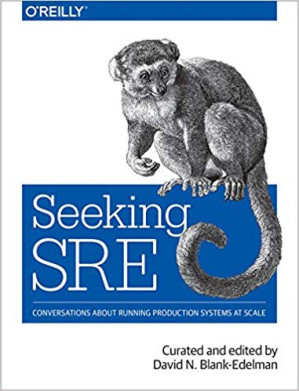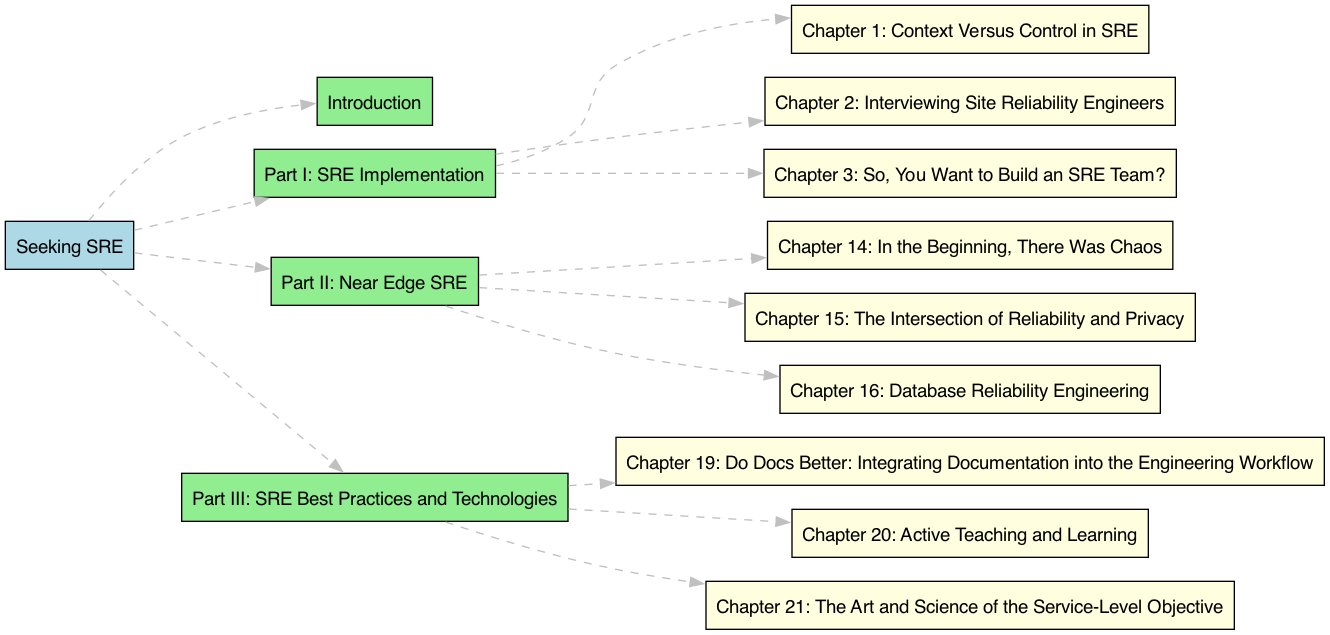Insights from Seeking SRE
Site Reliability Engineering (SRE) has become a fundamental practice in ensuring the reliability and efficiency of large-scale production systems. "Seeking SRE: Conversations About Running Production Systems at Scale" by David N. Blank-Edelman offers a comprehensive exploration of SRE practices through a series of insightful essays and interviews. This book serves as an invaluable resource for anyone involved in managing complex systems, from seasoned SREs to those new to the field.

Seeking SRE: Conversations about running production systems at scale
Summary

Part I: SRE Implementation
Chapter 1: Context Versus Control in SRE
The opening chapter addresses the balance between providing context and exerting control within SRE practices. It explores how teams can maintain reliability while empowering engineers to make informed decisions. This balance is crucial for fostering an environment where reliability and innovation can coexist.
Chapter 2: Interviewing Site Reliability Engineers
This chapter offers a detailed guide on how to effectively interview candidates for SRE positions. It emphasises the importance of assessing both technical skills and cultural fit, providing practical tips for evaluating a candidate's problem-solving abilities and their approach to reliability.
Chapter 3: So, You Want to Build an SRE Team?
Building an SRE team requires careful planning and strategy. The author discusses the steps involved in creating a successful SRE team, from defining the team's mission and scope to recruiting the right talent and establishing best practices.
Part II: Near Edge SRE
Chapter 14: In the Beginning, There Was Chaos
Chaos engineering is introduced as a method for improving system resilience by proactively testing how systems respond to unexpected conditions. The chapter explains the principles of chaos engineering and provides examples of how it can be implemented to identify weaknesses before they lead to failures.
Chapter 15: The Intersection of Reliability and Privacy
This chapter delves into the challenges of balancing reliability with privacy concerns. It explores strategies for ensuring that systems are both reliable and compliant with privacy regulations, emphasizing the importance of integrating privacy considerations into SRE practices from the outset.
Chapter 16: Database Reliability Engineering
Database reliability is critical for the overall reliability of a system. The chapter discusses best practices for managing database reliability, including techniques for backup, recovery, and performance optimization. It highlights the unique challenges associated with database reliability and offers practical solutions for addressing them.
Part III: SRE Best Practices and Technologies
Chapter 19: Do Docs Better: Integrating Documentation into the Engineering Workflow
Good documentation is essential for effective SRE practices. This chapter provides guidance on integrating documentation into the engineering workflow, ensuring that it remains up-to-date and useful. It discusses tools and techniques for making documentation a natural part of the development process.
Chapter 20: Active Teaching and Learning
Continuous learning is vital for SRE teams to keep up with evolving technologies and practices. The author explores various methods for fostering a culture of active learning within SRE teams, including mentorship, training programs, and collaborative learning opportunities.
Chapter 21: The Art and Science of the Service-Level Objective
Service-Level Objectives (SLOs) are a key component of SRE. This chapter explains how to define, measure, and manage SLOs to ensure that they accurately reflect user expectations and business priorities. It provides practical advice on setting achievable SLOs and using them to drive reliability improvements.
Key Takeaways
- Balancing Context and Control: Effective SRE practices require a balance between providing engineers with the context they need and maintaining control over critical decisions.
- Chaos Engineering: Proactively testing system resilience through chaos engineering can help identify and mitigate potential failures before they occur.
- Continuous Learning: Fostering a culture of continuous learning is essential for keeping SRE teams effective and up-to-date with the latest practices and technologies.
Conclusion
"Seeking SRE: Conversations About Running Production Systems at Scale" by David N. Blank-Edelman is a must-read for anyone involved in the field of Site Reliability Engineering. The book's comprehensive coverage of SRE practices, combined with insights from industry experts, provides readers with the knowledge and tools needed to build and maintain reliable production systems. Whether you're an experienced SRE or just starting your journey, this book offers valuable guidance and inspiration for improving system reliability.